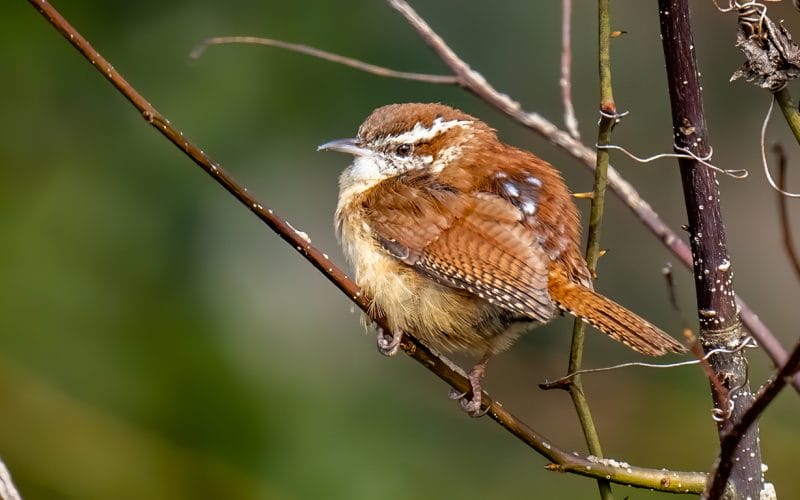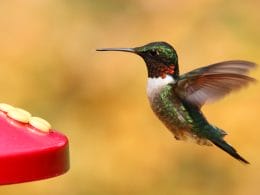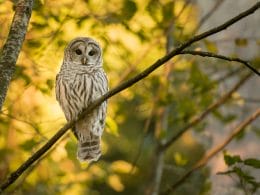There are 443 species of birds in the Buckeye State, as listed in the official OOS (Ohio Ornithological Society) bird checklist in July of 2021. If you live in Ohio and you’re curious about which of these you can commonly spot in your yard, then you’ve come to the right place!
In today’s article, we’re sharing interesting facts and easy descriptions of backyard birds of Ohio to help you better attract and identify them. Let’s get started!
1. Northern Cardinal

Scientifically known as Cardinalis cardinalis, the Northern Cardinal is probably one of the most easily distinguished backyard birds, not only in Ohio but across all of North America.
Its wingspan ranges between 8.9 to 12.2 inches, with a body length of 8.3 to 9.1 inches. Weighing around 1.5 to 1.7 ounces, the males of this bird species possess bright red plumage while the females are paler and more brown.
However, both sexes feature an iconic mohawk coupled with a reddish-orange beak that you can pinpoint right away.
The Northern Cardinal is a highly territorial bird, especially during the breeding season. It enjoys feeding on sunflower seeds, millet, berries, and peanuts. You can attract them to your backyard by scattering food on the ground or presenting it in platform feeders, tube feeders, or hoppers.
2. American Robin
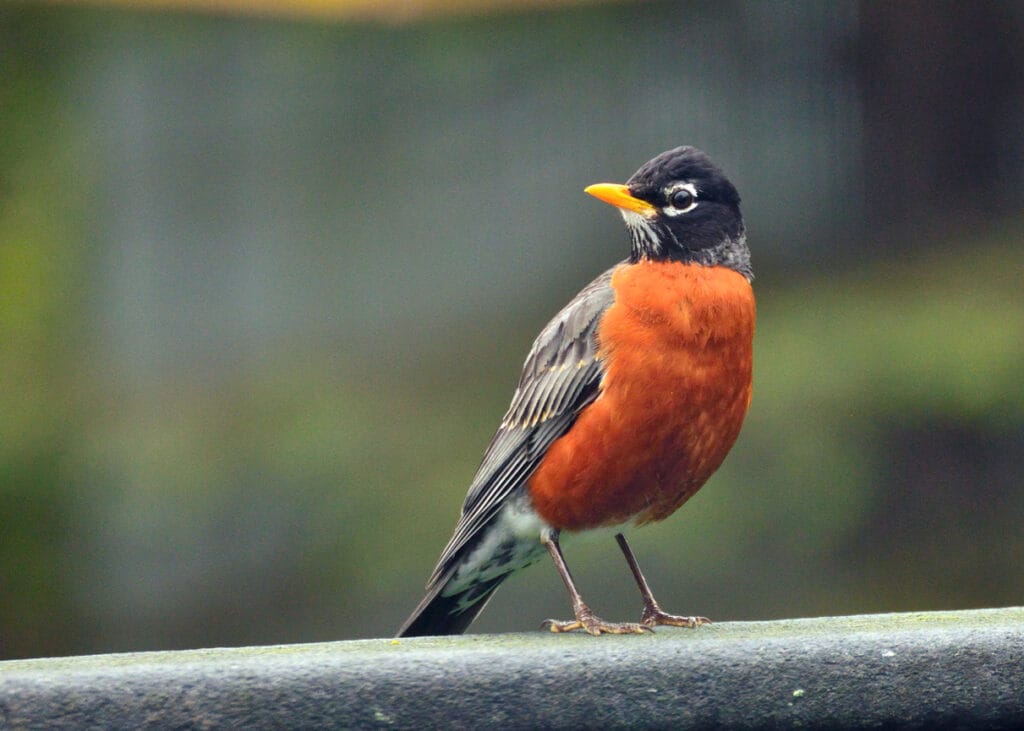
Also known as Turdus migratorius, the American Robin weighs about 2.3 to 2.8 pounds and measures 9.0 to 11.0 inches long, with a wingspan extending between 14.7 to 16.5 inches.
A common visitor of lawns and backyards in Ohio, this species features a rusty orange breast and belly with a black head and back. It has a yellow beak that contrasts against its dark feathers.
Author Note: American Robins prefer eating mealworms and other small invertebrates. They also like fruiting plants, but never seeds. You can best attract them by scattering food on the ground or presenting it in platform feeders.
3. Blue Jay
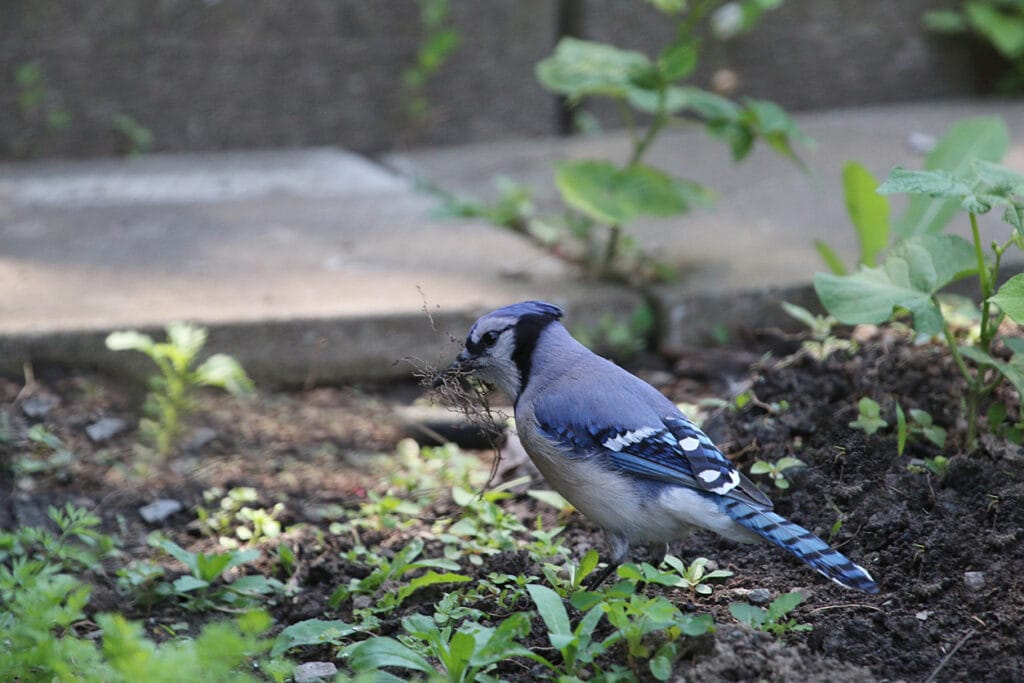
The scientific name of a Blue Jay is Cyanocitta cristata. It’s one of the prettiest and distinctly looking backyard birds you can spot, with a length of 9.8 to 11.8 inches and a wingspan extending from 13.3 to 16.9 inches.
Blue Jays possess blue heads and backs with black streaks. They sport blue crests that rise and fall depending on the bird’s state.
Weighing around 2.5 to 3.5 ounces, you can also a black line outlining the neck of a blue jay, creating a necklace-like look. Year-round residents of the state, Blue Jays like to munch on nuts, suet, berries, and sunflower seeds.
You can provide food on platform feeders or hopper feeders to attract these birds. They also enjoy birdbaths.
4. Mourning Dove

Scientifically referred to as Zenaida macroura, the Mourning Dove is somewhat bigger than the American Robin, measuring between 9.1 and 13.4 inches long and weighing around 3.0 to 6.0 ounces depending on the sex.
With a wingspan of just over 17.5 inches, Mourning Doves are often seen perched on trees, wires, or fences. They prefer feeding at ground level but may pay an occasional visit to your tray feeder, just make sure you lure them in with black sunflower seeds.
Mourning Doves have light brown and grey bodies coupled with black spotting on their wings. They feature pale peach breasts and bellies, along with a unique cyan ring surrounding their eyes.
5. Song Sparrow
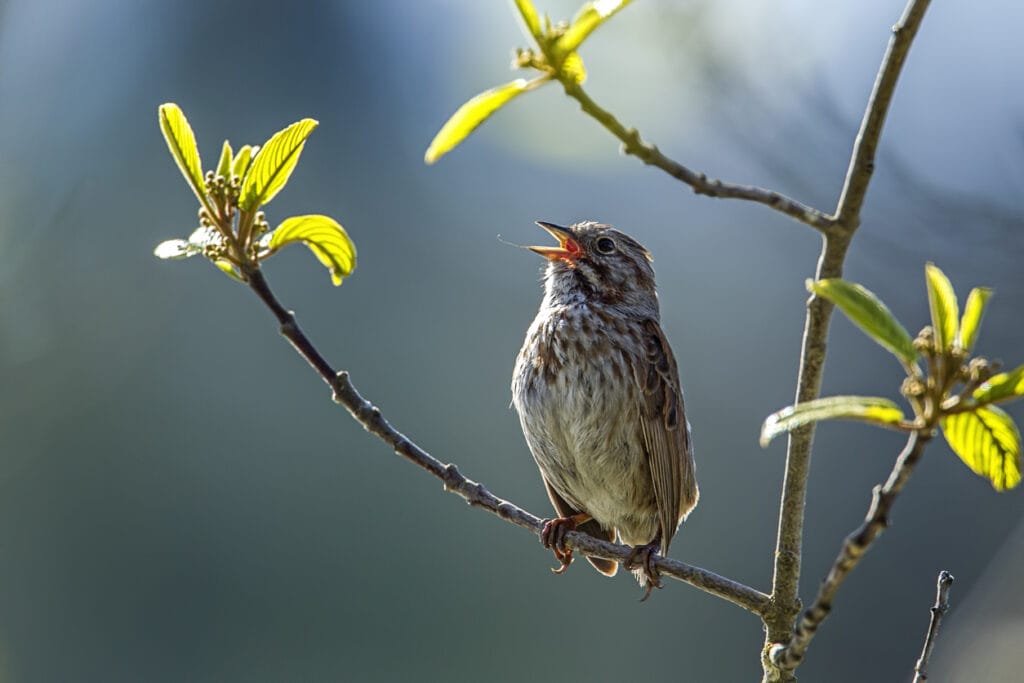
Scientifically called Melospiza melodia, the length of a Song Sparrow falls between 4.7 to 6.7 inches with a wingspan extending from 7.1 to 9.4 inches. This bird weighs around 0.4 to 1.9 ounces and features a light brown plumage with dark brown streaks.
Author Note: Not only do male Song Sparrows use their special songs to attract females, but also to defend their territories. They like to eat mixed seeds so they’ll often visit yard feeders for a snack.
To attract more Song Sparrows to your backyard, provide black sunflower seeds, nyjer seeds, and cracked corn on platform feeders.
6. American Goldfinch

Referred to as Spinus tristis if you want to get scientific, the length of the American Goldfinch ranges between 4.3 to 5.5 inches. It has a wingspan of approximately 7.5 to 8.7 inches and typically weighs well below an ounce.
Commonly named the wild canary, this little bird is an all-time favorite to many birdwatchers, particularly during the summer because that’s the period when males sport brilliant lemon yellow feathers accompanied by black wingtips and a black cap.
Males throughout the winter, as well as females, have a duller plumage colored a mixture of olive, greyish-yellow, and soft brown. The American Goldfinch especially enjoys thistle feeders, but they’ll visit most types of feeders given they offer black sunflower seeds and nyjer seeds.
7. Downy Woodpecker

Also known as Dryobates pubescens, the Downy Woodpecker is the smallest woodpecker you can find in North America, measuring 5.5 to 7.1 inches long and weighing around 0.7 to 1.1 ounces.
With a wingspan ranging between 9.8 and 12.2 inches, these birds love paying visits to backyard feeders throughout the entire state. Not to mention, you can easily identify them thanks to the distinctive red patch located on the back of their heads (males only).
Downy Woodpeckers feature black and white plumages. They enjoy eating black sunflower seeds, peanuts, and millet from suet or platform feeders.
8. Red-bellied Woodpecker

Another woodpecker that you can commonly encounter in your backyard in Ohio is the Red-bellied Woodpecker, also known as Melanerpes carolinus. Its body measures 9.2 to 10.3 inches long and weighs between 2.2 and 3.2 ounces.
With a wingspan of 15.7 to 17.8 inches, these medium-sized woodpeckers prefer suet feeders but will pay occasional visits to seed and hummingbird feeders.
Despite their name, the red on their bellies can be too pale to notice. However, they possess a distinct streak of bright red running from their beaks down to the back of their heads and necks.
They also sport unique-looking wings, adorned with black and white stripes.
9. European Starling
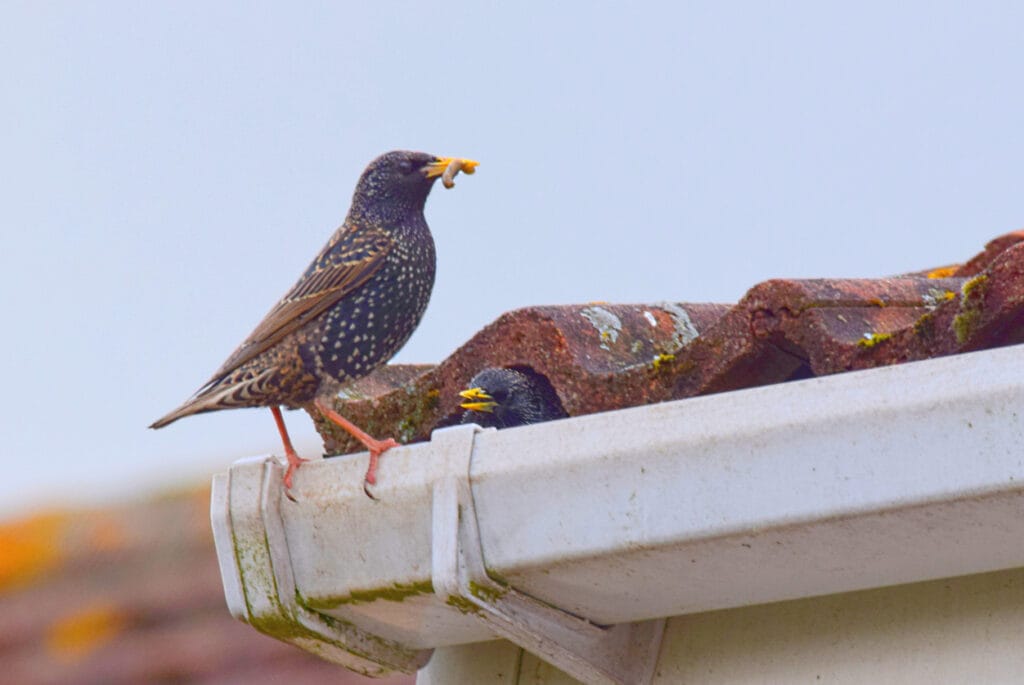
The European Starling is one of the birds that’ll visit your backyard without an invitation. Scientifically called Sturnus vulgaris, this bird is a prime example of an invasive species and is often regarded as a pest.
With a length of 7.9 to 9.1 inches, a wingspan of 12.2 to 15.8 inches, and a weight of 2.1 to 3.4 ounces, 100 European Starlings were first released in New York in the 1890s. From that point forward, their exceptional adaptability led them to take the county by storm.
Despite their predominantly aggressive behavior, these birds have a mesmerizing appearance as their all-dark bodies shine with a mixture of purple, blue, and green hues under sunlight.
European Starlings also feature long yellow beaks and legs, in addition to white specks peppered down their backs and on their wings. They’re non-native, but they’re quite common throughout the entire country.
These birds equally like all sorts of feeders and they like to eat black sunflower seeds, cracked corn, suet, and peanuts. Still, you don’t have to present any specific food to attract European Starlings, they’ll probably end up inviting themselves to your yard.
10. American Crow
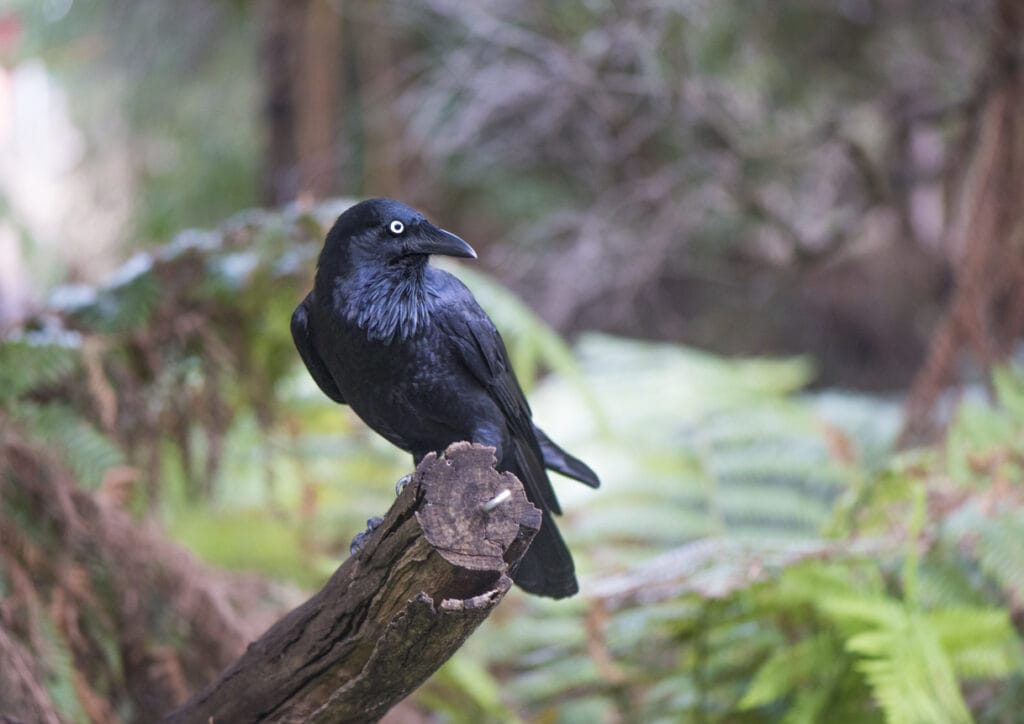
Known in the scientific community as Corvus brachyrhynchos, the length of an American Crow falls between 15.8 to 20.9 inches with a wingspan of 33.5 to 39.4 inches and weight ranging between 11.2 to 21.9 ounces.
This bird possesses a pitch-black body from beak to claw. They’re considered relatively big and give a characteristic cawing call that you’re likely familiar with.
Author Note: A highly intelligent species, American Crows like to remain perched high in treetops to keep a wide bird’s eye view of the area. They’re omnivorous birds but you can attract them to your backyard by offering peanuts.
They can, however, become annoying as they’re also lured in by trash or pet food sitting outside.
11. White-breasted Nuthatch
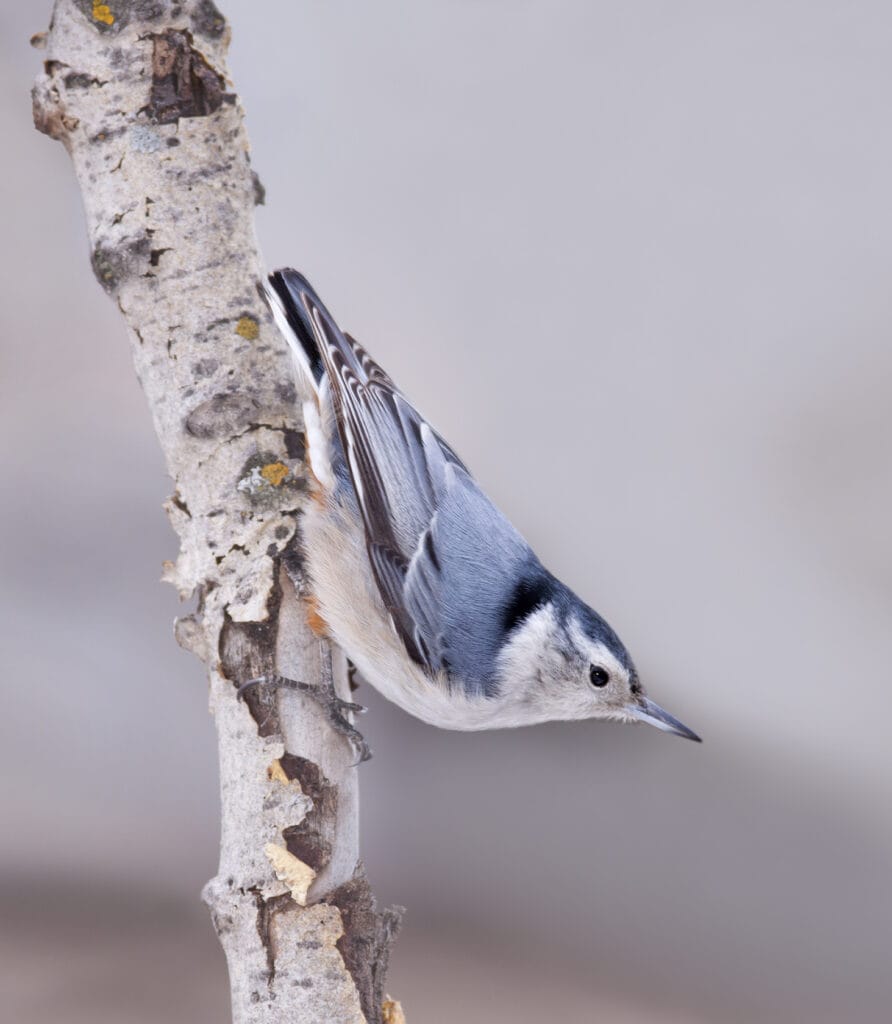
Next up is the White-breasted Nuthatch, also referred to as Sitta carolinensis. The little balls of energy have a length of about 5 inches and a wingspan ranging between 7.9 and 10.6 inches.
They weigh in at 1 ounce -more or less- and get the name “nuthatch” from their habit of shoving nuts under the bark of a tree then using their sharp beaks to hatch them out.
Not to mention, they’re also super easy to identify thanks to the bold black stripe decorating the top of their head. These birds also feature greyish white faces and bellies, as well as black and grey wings.
The White-breasted Nuthatch will most likely visit your backyard if you offer peanuts and sunflower seeds on suet or tube feeders.
12. Tufted Titmouse
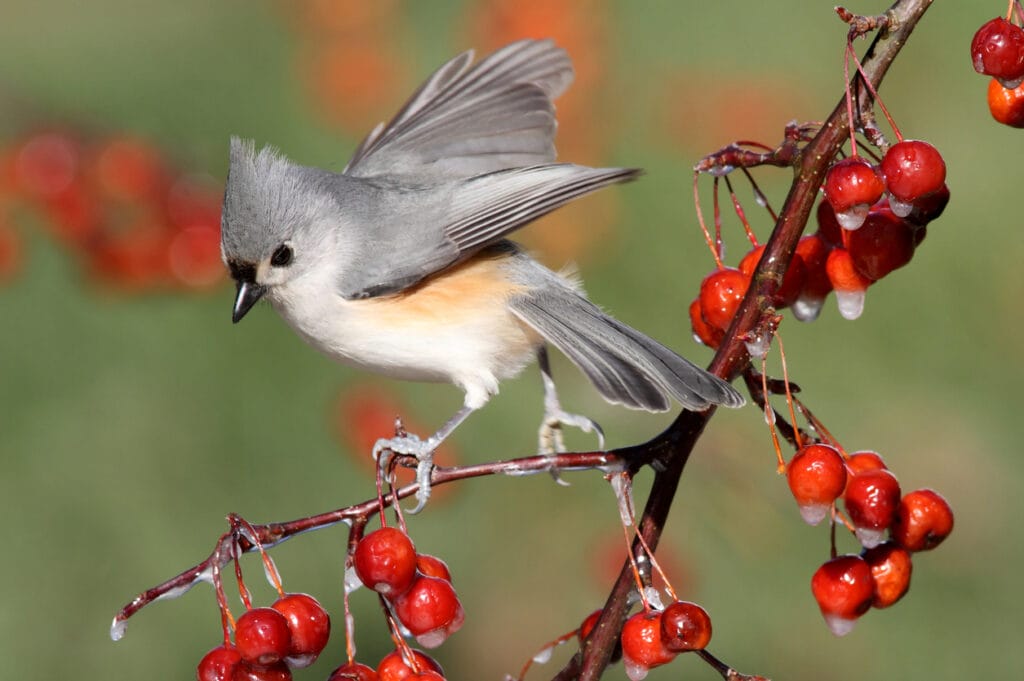
Scientifically known as Baeolophus bicolor, the Tufted Titmouse is one of the most adorable birds on today’s list.
Weighing less than a single ounce and measuring about 5.5 to 6.3 inches long, these birds are similar to Northern Cardinals as they possess a unique grey mohawk to help you recognize them. Their wingspan ranges from 7.9 to 10.2 inches.
Other than that, these birds have plumage that’s silver at the top and greyish white at the bottom. They also feature black beaks with a black spot just above.
To encourage Tufted Titmice to visit your backyard, set up tube, suet, or platform feeders with sunflower seeds, peanuts, and suet.
13. House Sparrow
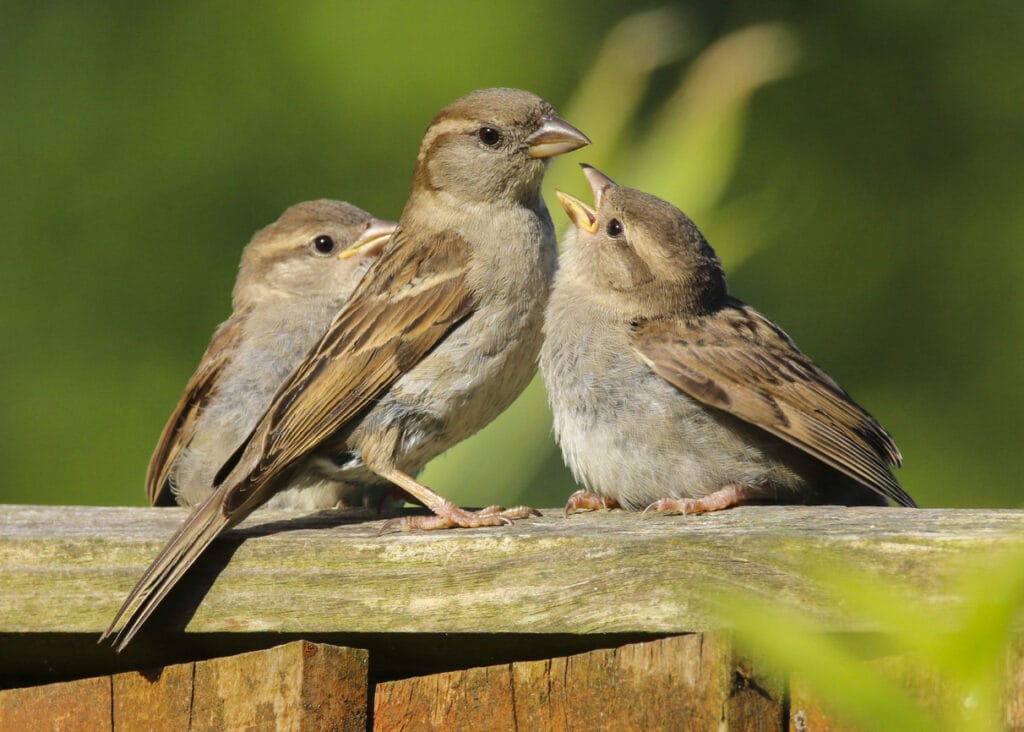
As with European Starlings, House Sparrows are often considered pests. Scientifically called Passer domesticus, this is the only wild bird species that you can legally capture and humanely kill under federal law.
Measuring 5.9 to 6.7 inches long and weighing around an ounce, House Sparrows were first released in New York as well. Their wingspan ranges from 7.5 to 9.8 inches and they’re famous for their aggressive behavior towards other birds, especially in nesting locations.
They’ll eat virtually any type of seed and will visit your backyard even if you don’t feed them. These invasive birds feature a brown plumage with black and orange-brown streaks on their wings and backs.
14. Common Grackle
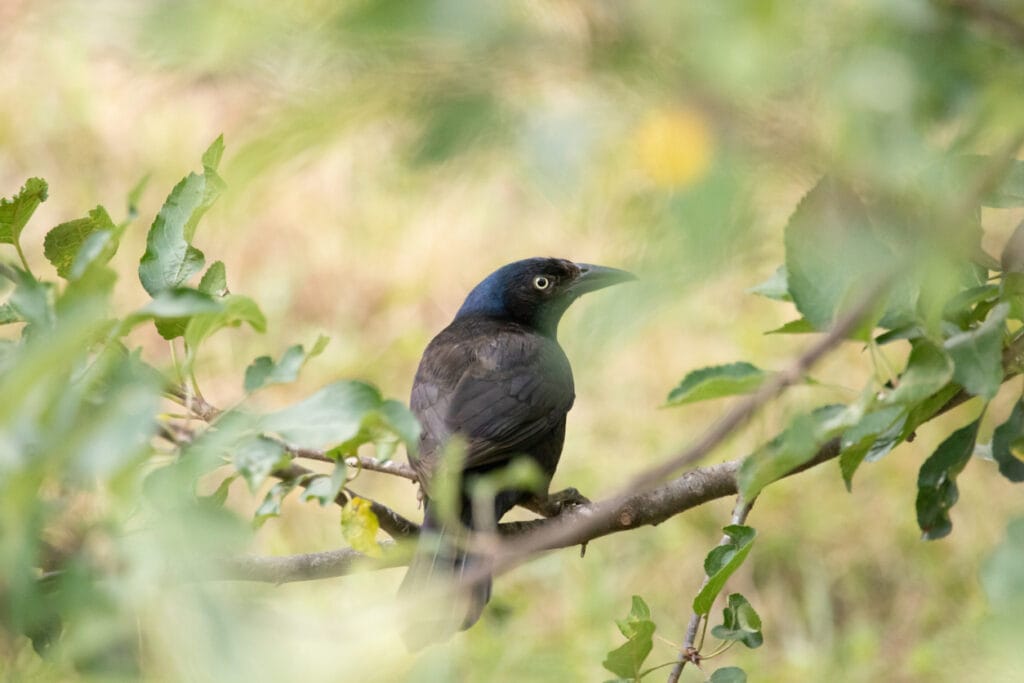
The Common Grackle, also referred to as Quiscalus quiscula, is a blackbird that sports a glossy iridescent plumage with purple, blue, and green hues. It measures 11.0 to 13.4 inches long and weighs anywhere between 2.6 and 5.0 ounces.
With a wingspan ranging from 14.2 to 18.1 inches, these birds love to eat corn -along with many other crops- and typically hang out in noisy groups on treetops. They can be quite annoying and also eat garbage.
Top Tip: If you want to attract Common Grackles to your backyard, offer mixed grain and seed on platform feeders or sprinkle them on the ground.
15. House Finch

Last but not least, we have the House Finch, also referred to as Haemorhous mexicanus. It’s an intrusive bird species that measures 4.9 to 6.1 inches long and weighs less than an ounce. With a wingspan of 8.1 to 10.5 inches.
However, House Finches aren’t as hated as House Sparrows because they aren’t as aggressive or destructive. These birds are likely to visit your backyard in large flocks and hoard the feeders.
It’s easier to identify the males because they possess a reddish-orange color spread across their heads and chests. The females, on the other hand, are brown all over.
If you want to attract House Finches to your backyard, set up platform or tube feeders with black sunflower seeds or nyjer seeds.
Wrap Up
There you have it,15 of the most common backyard birds of Ohio. The descriptions and information we discussed today will help you attract and recognize them when they pay you a visit. All you need to do is stay on the watch!
FAQ
The most common bird in Ohio is the American Robin.
The rarest bird in Ohio is the Kirtland’s Warbler, which is a threatened species.
Ohio has a diverse avifauna with many different species of birds including waterbirds, songbirds, birds of prey, and gamebirds. Some common species include the Eastern Bluebird, the Tufted Titmouse, and the Red-tailed Hawk.
The official bird of Ohio is the Cardinal.





